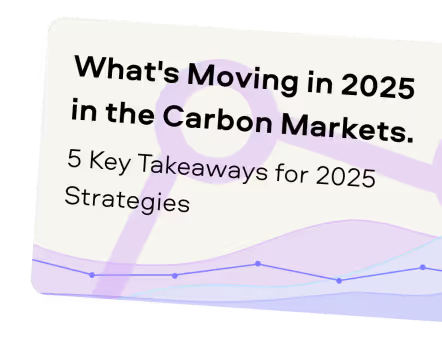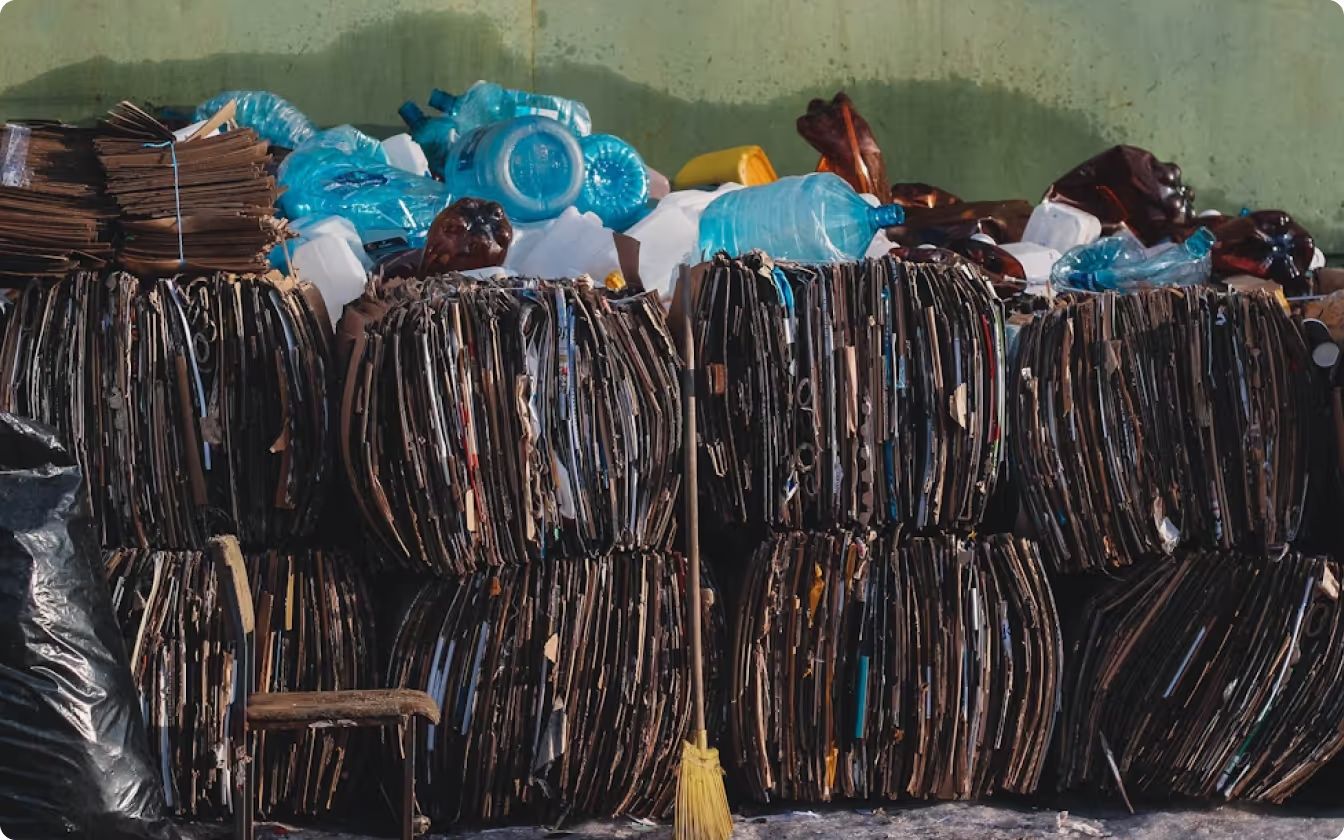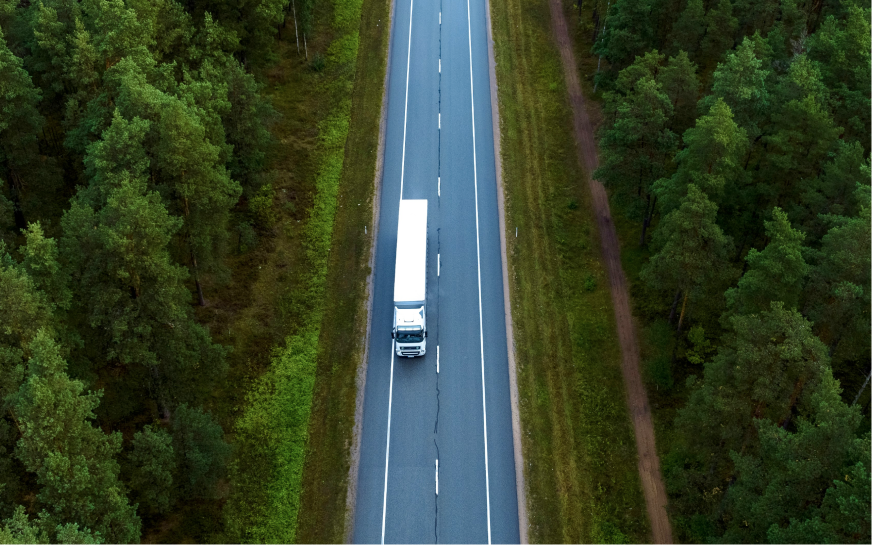“Over the years we’ve invested significantly in our field data team - focusing on producing trusted ratings. While this ensures the accuracy of our Ratings, it doesn’t allow the scale across the thousands of projects that buyers are considering.”
For more information on carbon credit procurement trends, read our "Key Takeaways for 2025" article. We share five, data-backed tips to improve your procurement strategy.

One more thing: Connect to Supply customers also get access to the rest of Sylvera's tools. That means you can easily see project ratings and evaluate an individual project's strengths, procure quality carbon credits, and even monitor project activity (particularly if you’ve invested at the pre-issuance stage.)
Book a free demo of Sylvera to see our platform's procurement and reporting features in action.
Why 2030 Is a Tipping Point for Enterprise Waste
The future of waste management is defined by its move from the back office to the boardroom. The year 2030 is not only a milestone for the UN Sustainable Development Goals, but also a critical checkpoint for enterprises: just five years remain to align company strategies with global targets.
Three forces stand out:
- Regulatory drivers: From a European perspective, the future of waste management will be shaped by CSRD/ESRS regulations, ISO 14001, and EPR frameworks. The Corporate Sustainability Reporting Directive (CSRD), and specifically ESRS E5, requires audited, site-level reporting of waste outflows. ISO 14001 alignment and the expansion of Extended Producer Responsibility (EPR) schemes make compliance more data-intensive than ever.
- Cost and risk pressures: Rising transport costs, fragmented vendor networks, and growing audit exposure push CFOs and QHSE managers to scrutinise every tonne.
- Resource scarcity: As raw materials become increasingly scarce and expensive, enterprises must optimise the use of resources, extend material lifecycles, and reduce environmental impact.
Together, these forces make 2030 a decisive turning point. Companies that delay risk higher costs, compliance failures, and reputational damage. Those who invest early in verified, centralised waste management data will gain efficiency, build resilience, and transform waste materials into valuable resources, all while aiming to reduce greenhouse gas emissions from traditional waste disposal methods to sustainable practices that support the circular economy.
With these forces in play, here are ten trends that define the future of enterprise waste management:
The 10 Trends Defining the Future of Waste Management
#1 AI-Driven Waste Analytics
Artificial intelligence is revolutionizing waste management by transforming how enterprises handle data. Instead of manually cleaning spreadsheets or reacting to after-the-fact reports, AI can integrate fragmented datasets, detect anomalies, and surface trends across thousands of records. This turns raw waste flows into actionable insights that support sustainable practices and circular economy principles—making data both faster and smarter.
#2 CSRD/ESRS-Ready Data
The future of waste management lies in the realm of being reshaped by regulation. The CSRD requires companies to report verified waste outflows under ESRS E5, with audit-ready traceability across sites. Relying on spreadsheets or fragmented waste management systems won’t stand up to this level of scrutiny. To stay ahead, enterprises need robust data pipelines and sustainable waste management practices that ensure consistency and transparency, while aligning with circular economy principles to conserve natural resources.
#3 Circularity Mapping for Resource Recovery
With raw materials increasingly scarce and costly, enterprises can’t afford to treat waste as simple outflows. Visibility into material flows is essential to uncover opportunities for waste reduction, reuse, and higher-value recycling. Circularity KPIs—such as reuse rates, recycling rates, and resource recovery—are now central to measuring how effectively resources are kept in play under circular economy principles.

#4 Supplier Benchmarking
Improving waste treatment starts with understanding where you stand today. In the waste management industry, benchmarks are essential: without them, it’s impossible to know whether your recycling rates, compliance reliability, waste separation efficiency, or transportation costs are strong or lagging. By comparing processor performance against peers, enterprises can uncover realistic areas for improvement, reduce environmental impact, and negotiate better outcomes. Benchmarking also highlights where innovative waste management solutions and recycling technologies can drive measurable gains.
#5 Decarbonising Waste Logistics
Transport may be one of the most actionable ways to cut carbon in waste management. Waste often travels long distances—even across borders—when closer treatment options exist. Every unnecessary kilometre garbage trucks drive increases transportation costs, greenhouse gas emissions, and the overall environmental footprint.
What This Means for Enterprise Teams (QHSE, Sustainability, Procurement)
- QHSE: Move beyond fragmented spreadsheets to verified, audit-proof data. Break down silos and set up robust pipelines, supported by real-time dashboards, so every datapoint is traceable and audit-ready.
- Sustainability: Make circularity measurable. Track KPIs such as reuse, recycling, and recovery rates, alongside carbon from transport and treatment, to measure progress toward 2030 targets.
- Procurement: Go beyond cost comparisons by benchmarking vendors on treatment types, recycling outcomes, compliance reliability, and transport distances. Use these insights to negotiate smarter contracts with transparent SLAs.
A 90-Day Action Plan to Get Future-Ready
- Days 0–30: Start small by selecting one or two pilot locations. Avoid getting lost in the scale of the challenge—focus on gathering all waste data sources for those sites (documents, spreadsheets, invoices) and begin standardising them.
- Days 31–60: Map your data to organisational KPIs and reporting requirements. Set up dashboards and anomaly checks, then analyse the results: Which streams travel too far? How are you performing on recycling rates, or reliance on landfill and incineration?
- Days 61–90: Identify improvement opportunities. Where can you do better? Which materials can be recovered, and are there closer processors available? Translate insights into operational changes. This will evolve into a longer-term plan, but the sooner you identify what to improve, the more likely you are to achieve your goals.
Waste KPIs to Track for a Greener Future
Transport may be one of the most actionable ways to cut carbon in waste management. Waste often travels long distances—even across borders—when closer treatment options exist. Every unnecessary kilometre garbage trucks drive increases transportation costs, greenhouse gas emissions, and the overall environmental footprint.
Recommended KPIs include:
- Recycling & reuse rate — aim for 85%+ across streams
- Separation rate — target 85%+ (higher separation improves reuse potential)
- Landfill & incineration rate — keep below 5%
- Total CO₂ from waste — transport + treatment
- €/tonne processing cost — compare efficiency across sites and vendors
- Transport kilometres per tonne — highlight distance and cross-border inefficiencies
FAQs
What is the future of waste management for enterprises?
By 2030, waste management will move from disposal-focused to data-driven. Success will be defined by compliance readiness (CSRD/ESRS, EPR, ISO 14001), carbon accountability through Scope 3 reporting, and reducing waste generation with measurable circularity KPIs like reuse and recovery rates.
How does AI improve waste reporting and compliance?
AI accelerates the process of making waste data usable. It can enrich fragmented datasets, extract information from PDF documents, and analyse large volumes of records to detect anomalies, gaps, or outliers—turning raw data into audit-ready insights.
What KPIs matter most for the circular economy?
Key metrics include: recycling & reuse rate (target 85%+), separation rate (target 85%+), landfill & incineration rate (keep below 5%), total CO₂ from waste (transport + treatment), €/tonne processing cost, transport kilometres per tonne, and % verified waste data coverage.
How does geoFluxus help with ESRS E5 and ISO 14001?
geoFluxus automates the mapping, verification, and reporting of waste flows. By consolidating data across systems and creating full audit trails, the platform produces audit-proof outputs aligned with ESRS E5, CSRD requirements, and ISO 14001 standards.









